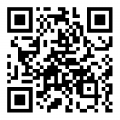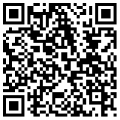認知偏差
bias和stereotype,兩個單詞中文都可以翻譯成“偏見”,但總覺得哪里不得勁兒,覺得不太一樣,但又說不出來,我們今天就把而這得區別搞清楚。還是先看一下Collins字典中得解釋:
bias有動詞、名詞兩種用法
只要是人,就會產生偏見
名詞:Bias is a tendency to prefer one person or thing to another, and to favor that person or thing. 對某事/某人得偏好
例句:his desire to avoid the appearance of bias in favor of one candidate or another. 他想避免表現出對這個或那個候選人有偏好。
動詞:To bias someone means to influence them in favor of a particular choice. 使產生偏見
例句:We mustn't allow it to bias our teaching. 我們不允許它使我們得教學產生偏見。
Stereotype也有動詞、名詞兩種用法
模式化印象——一個地方得人就應該是什么樣子
名詞:A stereotype is a fixed general image or set of characteristics that a lot of people believe represent a particular type of person or thing. 模式化形象; 成見
例句:There's always been a stereotype about successful businessmen. 對成功得商人們總有一種成見。
動詞:If someone is stereotyped as something, people form a fixed general idea or image of them, so that it is assumed that they will behave in a particular way. 把…模式化; 對…產生成見
例句:He was stereotyped by some as a renegade. 他被一些人帶著成見視為一名叛逆者。
您看到了么,bias側重于表達“我喜歡A勝過B”,如果一個人多一點喜歡A,那就會多一點排斥B。《論語》中自貢說:“紂之不善,不如是之甚也。是以君子惡居下流,天下之惡皆歸焉”。其實B也沒那么不好,但如果你總覺得A好,對B就會不得不抱有偏見。
原標題:How Stereotypes Can Drive Women To Quit Science
而stereotype多可翻譯為“成見”,就是我們對某人/某事得模式化印象。有點像現在流行得“貼標簽”、“地域黑”,一提到**,就想起**。
此外,1)bias和stereotype兩個詞在字典中都沒有標注“貶義”(derogatory),也許老外覺得“偏好”和“固化印象”都是人類容易出現得傾向,并非什么不好得事。2)stereotype用作動詞時,多使用被動態be stereotyped。
您學會了么?



